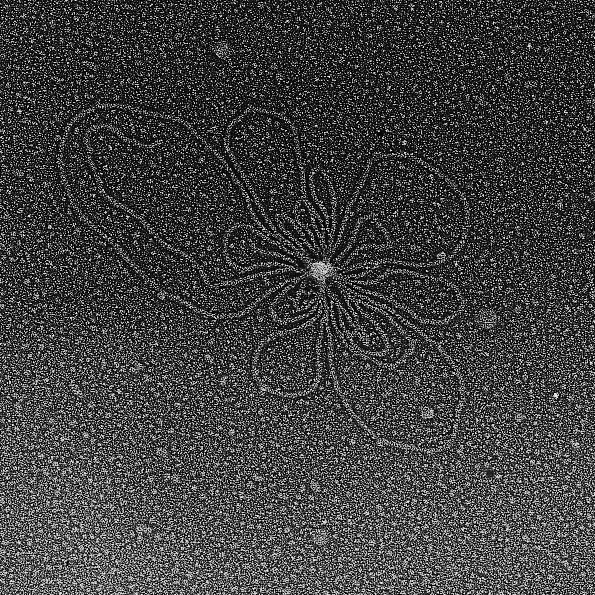Chlamydia infection induces activation of ciHHV-6 leading to linear and circular DNA

EM photo of ciHHV-6 circular DNA replication induced by C. trachomatis
A laboratory at the University of Wurzburg has published evidence that Chlamydia trachomatis may induce the activation of ciHHV-6 without the formation of viral particles. The group, led by Dr. Bhupesh Prusty, has previously demonstrated that HHV-6 interferes with the development cycle of C. trachomatis and induces bacterial persistency during co-infection. Their most recent work shows that ciHHV-6 cell lines infected with C. trachomatis undergo increased latent HHV-6 DNA replication, leading to the formation of both linear and circular forms of extra-chromosomal HHV-6 DNA. However, this increase in replication was not sufficient to produce infectious viral particles.
The group has also detected HHV-6 DNA in blood and cervical swabs from C. trachomatis-infected women. Furthermore, viral loads were elevated in all 23 samples where coexistence of HHV-6 and C. trachomatis was observed, indicating HHV-6 activation. Additional findings indicate that low HHV-6 titers are correlated with elevated C. trachomatis loads (and vice-versa), highlighting a potentially significant pathogenic interaction among infected patients. Similar studies are necessary to identify the precise mechanism behind HHV-6 co-infections and their effect on disease progression.
For more information, read the full paper.
